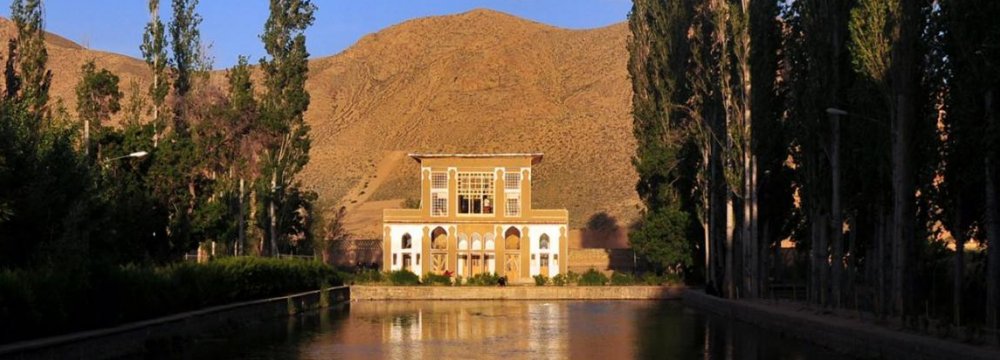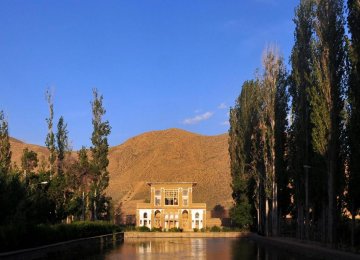Abundant with remnants of the past - caravanserais, castles, towers and ramparts - Damghan can hardly be overlooked by a cultural tourist. It is the capital city of Damghan county, Semnan Province, 342 km east of Tehran.
The name ‘Damghan’ is derived from ‘Moghan’, which in Persian refers to practitioners of ‘magos’, or magic, and included astrology, alchemy and other forms of esoteric knowledge. The city was originally called ‘Dah Moghan’, meaning ten magi, which eventually evolved to its current name or Damghan.
The historical significance of Damghan derives principally from its proximity to the site of the Parthian capital, Hecatompylos, during the ascendancy of the Arsacid of Media dynasty after the capture of the city by Alexander the Great, when it was a significant trading post of the Silk Road, on the way from Merv to the Mediterranean coast, according to the book International Dictionary of Historic Places.
Tepe Hessar, an Ancient Garrison
Of the historical treasures in Damghan one must refer to the valuable Tepe Hessar which is thought to be a garrison. Prof. Hertzfeld between 1931-1933 and Dr. Schmidt from 1933-1938 were the first archaeologists who explored the site.
Tepe Hessar with several layers of civilizations has a long history. The layers include settlements of Medes dynasty and Achaemenid era, as well as Parthian and Seleucid periods, when the site saw its best days.
Historical excavations have shown that the history of Damghan starts between 5th and 4th millennium BC. Carbon 16 isotope inspections in Tepe Hessar have revealed an age of 7,000 years for some artifacts.
City Fortification
Walls, fortifications and battlements have survived in many parts of Damghan. As mentioned in historical sources, the walls were wide enough to let chariots run atop. The remains of such walls can be seen in north and south of Damghan.
Tarikhaneh, the Oldest Mosque
Still in its original shape, the mosque of Tarikhaneh is the oldest mosque in Iran belonging to the 1st century after the birth of Islam. Tarikhaneh in southeast Damghan and the historical mosque of Naeen city in Isfahan Province are the only mosques prior to Seljuk era when the archetype of Iranian mosque architecture took form.
Building material and architecture of the mosque is of Sassanid style, quite analogous to Sarvestan Palace at 90 km southeast of Shiraz, and Palace of Ardeshir in Firuzabad of Fars.
Due to the plan and architecture of the building, some believe it was a fire temple during the Sassanid period, before it was replaced by the existing mosque.
Tarikhaneh Mosque has a square yard and a gallery of 18 columns facing Qibla, the direction of Ka’ba in Mecca. Three sides of the yard are surrounded by porticos. The minaret rising over the mosque is said to belong to Seljuk era. The tiled inscription over the minaret is in fact the oldest tile work in Islamic architecture. Tarikhaneh is comprised of two words: Tari and Khaneh. Tari, Tanri, Tengri, Tangri, or Tenger literally meaning sky or heaven, is a Turko-Mongol god, identified with Allah by early Muslims of the region. The latter part, khaneh, means house or place. Thus, Tarikhaneh can be translated as house of God.
Seljuk architecture
Seljuk era has left behind architectural treasures in Damghan: the shrine of Pir-Alamdar ‘old flag-bearer’; Masjid Jame’ or congregation mosque and its minaret; Mansurkuh village; the tower of Jafar’s tomb; and the vault of Chehel-Dokhtaran ‘40 girls’. For the first time in Iran, the brick-works of the monuments are adorned with decorations so as to compensate the monotony and repetition.
Chehel-Dokhtaran, a Family Vault
The vault of Chehel Dokhtaran is located at the center of Damghan and behind Jafar’s tomb. According to the Kufic inscription in the edifice, the vault was built in 1087. Though the city lies on an earthquake belt, the vault has survived without cracks.
The onion-shaped dome of Chehel-Dokhtaran is adorned with artistic brickworks and inscriptions. The building which used to be a family vault is 14.8 meters high. In its famous inscription the deceased have sought divine mercy and blessing.
Ismaili Forts
There are two Ismaili forts built on top of two mountains, north of the city, belonging to esoteric sect of Ismailism. The first, being 5 km off the city, is on the summit of Gerdkuh mountain. The second, known as Mehrnegar Fort, is on Mansurkuh mountain, 22 km north of Damghan.
Cheshme-Ali
Cheshme-Ali, 30 km north of the city, is one of the permanent springs in Damghan. Thanks to verdant foliage and pleasant climate this region has been frequented by people from ancient times. During the Qajar period many buildings were constructed in Cheshmeh-Ali among which the palaces of Fath-Ali Shah and Aqa Mohammad Khan still stand. Fath-Ali Shah’s palace is built in the middle of a lagoon, between the first and second spring; across from Aqa Mohammad Khan’s palace.
What’s there for Eco-Tourists
The dark yellow sand is the characteristic feature of Damghan plain, spotted here and there by scant presence of Tamarix and Haloxylon trees.
Much of the 7,000 years history of Damghan has been forgotten beneath the sand dunes surrounding the city. Nevertheless, the very presence of the dunes attracts flocks of eco-tourist to the deserts south of Yazdanabad village, 75 km from Damghan.
The area covered by sparse vegetation is surrounded by blowing sands. Deeper down into the desert, especially beyond the villages of Hassanabad, Amarvan, and Khurzan, the blowing sands increase, and all one can see is fine sands, dry land, and a desert empty of human trace.
The strong winds move the sea of sand dunes. The twilights are fascinating times to watch the phenomenon, when there is a magical play of light over the dunes. Winds stop at sunset, letting a silent view of the desert for half an hour. That is when one can indulge in the spectacle without using glasses or eye covers.
Souvenirs
The city trades in pistachios and ‘kaghazi’ almonds with very thin shells, famous throughout the country.





